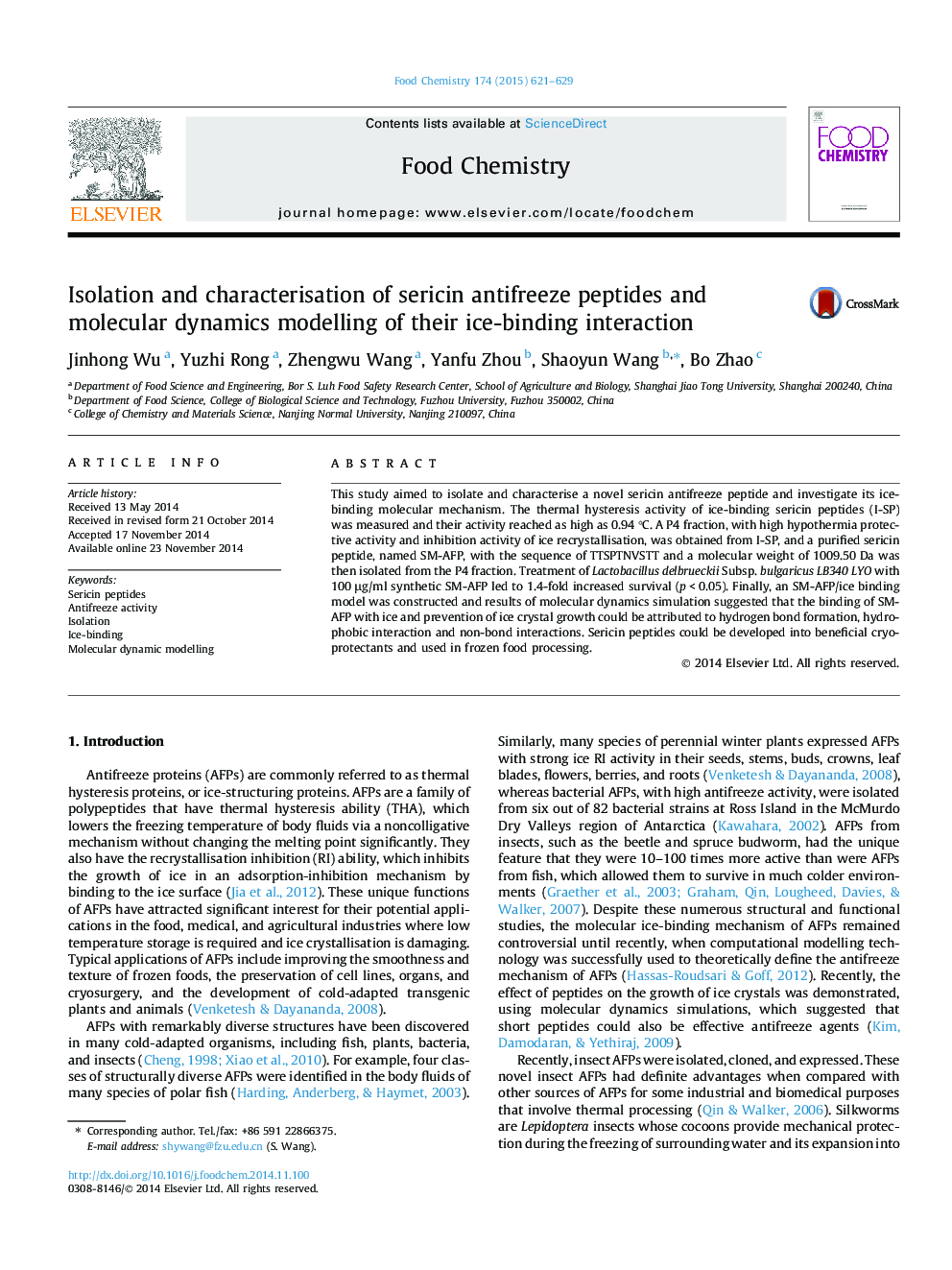| Article ID | Journal | Published Year | Pages | File Type |
|---|---|---|---|---|
| 7594010 | Food Chemistry | 2015 | 9 Pages |
Abstract
This study aimed to isolate and characterise a novel sericin antifreeze peptide and investigate its ice-binding molecular mechanism. The thermal hysteresis activity of ice-binding sericin peptides (I-SP) was measured and their activity reached as high as 0.94 °C. A P4 fraction, with high hypothermia protective activity and inhibition activity of ice recrystallisation, was obtained from I-SP, and a purified sericin peptide, named SM-AFP, with the sequence of TTSPTNVSTT and a molecular weight of 1009.50 Da was then isolated from the P4 fraction. Treatment of Lactobacillus delbrueckii Subsp. bulgaricus LB340 LYO with 100 μg/ml synthetic SM-AFP led to 1.4-fold increased survival (p < 0.05). Finally, an SM-AFP/ice binding model was constructed and results of molecular dynamics simulation suggested that the binding of SM-AFP with ice and prevention of ice crystal growth could be attributed to hydrogen bond formation, hydrophobic interaction and non-bond interactions. Sericin peptides could be developed into beneficial cryoprotectants and used in frozen food processing.
Related Topics
Physical Sciences and Engineering
Chemistry
Analytical Chemistry
Authors
Jinhong Wu, Yuzhi Rong, Zhengwu Wang, Yanfu Zhou, Shaoyun Wang, Bo Zhao,
